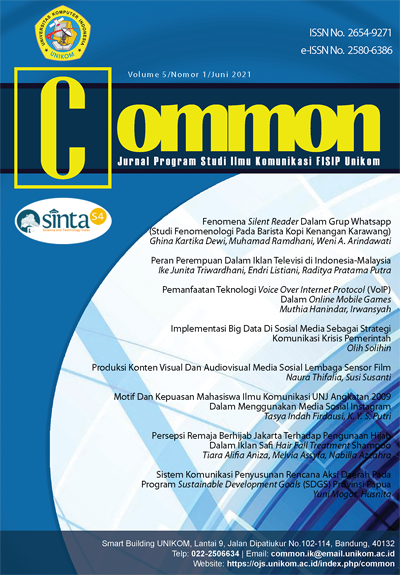PRODUKSI KONTEN VISUAL DAN AUDIOVISUAL MEDIA SOSIAL LEMBAGA SENSOR FILM
Main Article Content
Abstract
Indonesian Film Censorship Institution (Lembaga Sensor Film/LSF) uses the existence of social media to increase public knowledge about the LSF's role in the world of Indonesian cinema. As a government agency, LSF uses social media to share, increase public participation, collaboration, and assume the risk of fake news. Through social media, LSF intends to build an image, and educate the public to protect against the negative effects of film and promote the Indonesian film industry. This research reveals the content production on social media platforms used by the Film Censorship Institution (LSF) to convey information to the public. This study uses a qualitative method with a case study approach. Interviews, observation used to collect data, while literature review, and documents relevant to the research used as secondary data. Data analyzed using interactive data analysis techniques from Miles & Huberman. The results showed LSF uses Instagram, Facebook, and Twitter to convey visual and audiovisual information to the public. The visual content produces in four stages, ideas, visualization, revision, and final artwork (publication). The audiovisual content organizes in three stages, pre-production, production, and post-production. Changes in social media content increased LSF's Instagram, Twitter, and Facebook followers in six months.

